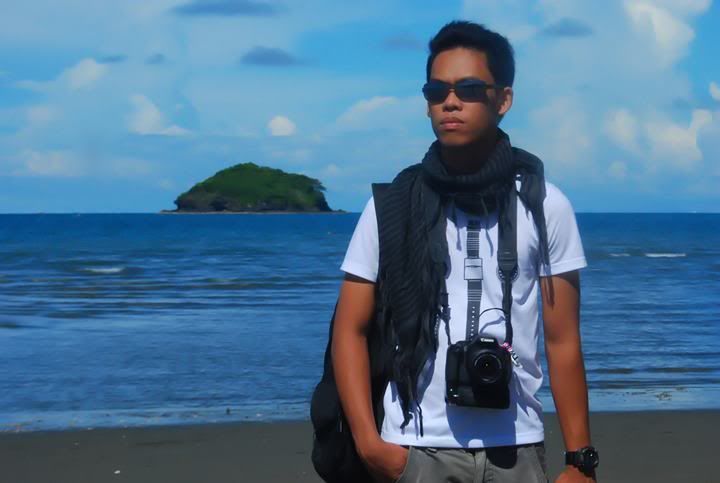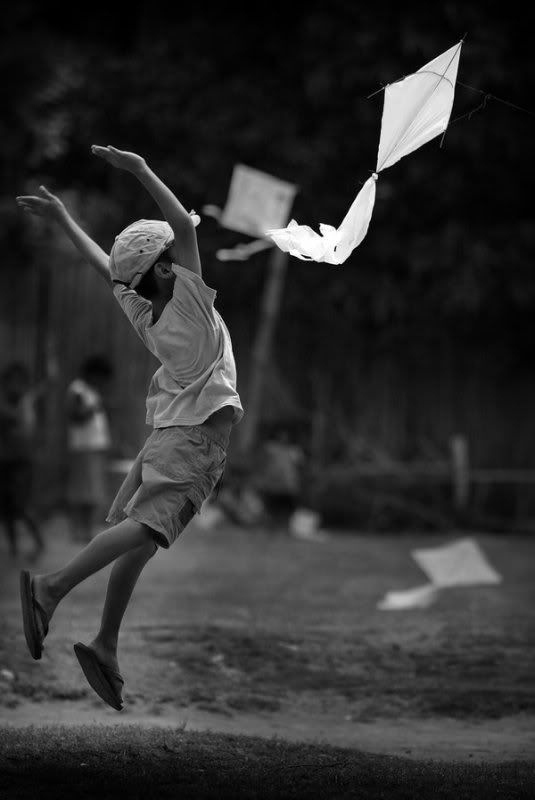Friday, March 30, 2012
 1:38 AM |
The Photographer of Moments
1:38 AM |
The Photographer of Moments
Part 1 of the Dumaguete Design Upstarts SeriesWhat inspires, or propels, someone to pursue art? Every artist has his reason, and there is no one answer to this question of beginnings. What we can know for sure—even if only in the language of the ephemeral—is the gravity that great art bears on us upon encounter. Sometimes great talent is something we come by through sheer accident, and sometimes we are drawn to it by the power of word-of-mouth. Regardless of how one comes about it, the sheer impact of its recognition is powerful. One is simply reduced into a state of awe. It is almost always a religious experience, as if having come in touch with it, you get an inkling of the spiritual.
It felt exactly that way when I first beheld one of my favorite paintings, Edward Hopper’s 1942 painting
Nighthawks—a somber existential drama in bright lights and color depicting four denizens in a city trapped in nighttime, in a bar, seen through a windowpane. Something about this painting has always intrigued me, deepening all the more over the years. When I finally came to see it for real in the gracious halls of Chicago’s Art Institute, I stood before it like a muted acolyte. I stared at it for what seemed like forever, unable to believe that I was finally seeing this great masterpiece, that it was before me. The experience of it moved me, and I must confess to tearing up just a bit, a wistfulness that was quite unexpected. Great art moves you like that.
One time, I was in a gig in Café Antonio when they used to do musical revues once every few weeks. (I don’t know why they don’t do that anymore.) I’m not sure exactly now what show that was. Perhaps it was the Apo Hiking Society tribute show, but I remember most this after-show jamming where this one singer—whose name escapes me, regrettably—started singing “Quando, Quando, Quando.” The guy did it with such unbelievable grace, his voice touched by something of a svelte naughtiness—I think everyone of us in that room stopped whatever it was we were doing, and just paid the greatest tribute of all: we listened, and we tried to capture the nuance of every single note. And when his song ended, we looked around, and we smiled. And somehow we knew we were touched by the divine in that masterful rendition of an old song.
Of course, these things come by rarely. The world, alas, is mostly awash in mediocrity. The shallow is currency in a world that is besotted by the common. The sublime always gets the shaft in favor of the silly. It is a world ruled by plastic beauty, the Kardashians, Taylor Swift, and
Twilight. Which is why, when we see great talent—especially in the small corners of Dumaguete City—we pounce on it like the treasure that it is.
This is an attempt to chronicle, somehow, a glimpse of what the future holds for the artist in Dumaguete, in particular the young people in this city who are into design. Because much has been said, and written, about our visual artists, our budding filmmakers, our writers—but what about those who dabble in photography, in fashion and jewelry design, in graphic design, in architecture, in interior design, in video art, in furniture design, in mixed media? Design is a tricky business of aesthetics, defined once by Valerie Pettis as “the search for a magical balance between business and art; art and craft; intuition and reason; concept and detail; playfulness and formality; client and designer; designer and printer; and printer and public.”
This brief survey of great young designers and artists in Dumaguete is not meant to compose an exhaustive list. God knows I must have missed one of two (or more) deserving of space in this essay. But these are the people who—over the past few years—have struck me as having captured something of an acute understanding of design. And they are young, of course—in body, and in ideas: composing a bright future for a city that will soon be in reckoning of their talents.

One begins with Hersley-Ven Casero, of course. Only a few weeks ago, he sold—through auction, which was a first in Dumaguete—a painting in benefit of the victims of Sendong and the Guihulngan earthquake. He is hardly an up-and-comer, having come into his own the past few years with his photography, and now his paintings. He got his start in design work in 2004 when he held his first digital camera, issued to him by Foundation University, where he now works. That encounter with the camera brought a bewildering enthusiasm in him: “I always brought it with me, and I took pictures of
everything,” he admitted.
Later on, Hersley realized that his interests lied primarily in portraits, especially in capturing how his subjects interacted with their environment. That bent is something he has come to nurture more and more. “It is photojournalism and documentary photography that I want to venture more into,” he said. “For me, this kind of photography is like catching the moment beyond the normal, and with spontaneity and decisiveness.”
And then he met photographer Luis Sinco of the Los Angeles
Times. The encounter proved productive, and this spurred him on with his interests. “There would be no Hersley-Ven Casero if there was no Luis Sinco,” he said. “He taught me a lot of things about photography—from the knowledge of the basics, up to the most complicated techniques. But he also taught me not just about recording images. He also taught how to interpret them, and how to deliver the message or the story behind a particular photo.”
Besides Mr. Sinco, he also cites Henri Cartier-Bresson as a major influence: “I admire his works because of the ‘joy of geometry’ that you see in his photographs.” He also cites Eugene Smith, an inspiration of a more practical sort: “Even when [Smith] had difficulties in his career, he still pursued and continued doing it.
But what is the underlying philosophy behind Hersley’s work? Looking at his photographs, and hearing him talking about them, it comes to me that it is not so much a philosophy than a form of intent. “It gives me satisfaction to share a slice of reality with every person seeing my photographs,” he says. “I put my heart in every picture I take, and for me that is one way of creating work that is edgier than expected.”

In that, Hersley makes a claim that his pictures speak really about his love for life. “I see life in a different way,” he said, “as a beautiful gift that one should treasure because it is worth keeping. I consider myself as the keeper and preserver of those precious moments that is part of life.” He cites his photo titled “Lift Up Yourself” as an example of this philosophy. It is a black and white photo of a kid at play with his kite. There is a sense of joy to the picture, and a sense of dramatic involvement demanded of the viewer. And the picture very much seems to capture an elusive moment of happiness in a child’s life. “Many of my friends thought this was a manufactured photo, a posed shot,” Hersley said. “In fact, this is a very good example of my philosophy of just catching a moment.”
(Next: Photographer Kat Banay as the Capturer of Natural Light….)Labels: art and culture, design, dumaguete, photography
[0] This is Where You Bite the Sandwich
GO TO OLDER POSTS
GO TO NEWER POSTS

















 1:38 AM |
The Photographer of Moments
1:38 AM |
The Photographer of Moments

